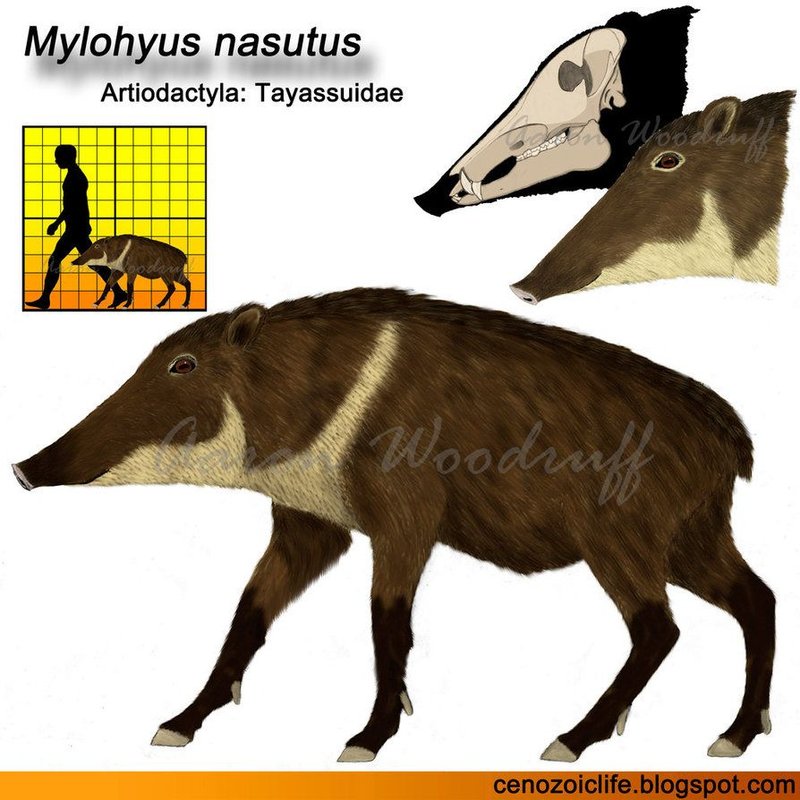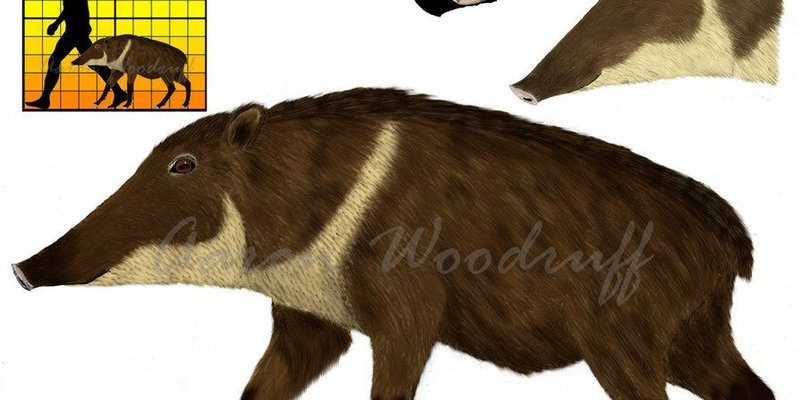
So why should you care about peccaries? Well, their evolutionary journey is like a living history book, showcasing how species adapt to their surroundings and navigate changes over time. You’ll find that studying peccaries not only illuminates the past but also helps us understand current biodiversity and conservation efforts. Let’s dig into the fascinating evolution of the peccary and discover where these intriguing creatures came from, where they are now, and where they might be headed.
What Are Peccaries?
To kick things off, let’s clarify what peccaries are. Peccaries are medium-sized mammals that resemble pigs, but they’re not actually part of the pig family. They belong to their own family, Tayassuidae, and there are three main species of peccaries: the collared peccary, the white-lipped peccary, and the chacoan peccary. These animals are found primarily in the Americas, from the southern United States down to Argentina.
You might be wondering what makes peccaries unique. Unlike domestic pigs, peccaries have sharp tusks and strong social structures. They tend to live in groups called sounders, which can consist of up to 20 individuals. This herd behavior helps them protect each other from predators and find food more effectively.
Peccaries are quite adaptable, thriving in various habitats including forests, savannas, and grasslands. They primarily feed on fruits, roots, and nuts, using their keen sense of smell to dig through the underbrush. This foraging behavior is crucial for their survival and plays a significant role in maintaining their ecosystems.
The Origins of Peccaries
The evolutionary history of peccaries dates back to the late Eocene epoch, roughly 40 million years ago. Fossils show that their ancestors roamed the Earth alongside early mammals and dinosaurs. The Tayassuidae family diverged from a common ancestor with pigs around this time, leading to the emergence of what we recognize as peccaries today.
It’s fascinating to think about how these animals have survived and thrived through massive changes in climate and environment. For example, during the Miocene, about 20 million years ago, the Earth experienced significant shifts, leading to the development of grasslands. Peccaries adapted to these new environments, making them more versatile in their foraging and habitat choices.
Over millions of years, peccaries diversified into the species we see today. Fossil evidence suggests that some of their relatives were much larger and even more formidable than modern peccaries, showcasing a fascinating evolutionary trajectory. This adaptability is part of what makes studying peccaries so intriguing.
Key Features and Adaptations
Peccaries have several distinctive features that have helped them survive in diverse environments. One of the most noticeable traits is their size and build. They typically weigh between 50 and 150 pounds, depending on the species, and have sturdy bodies covered in coarse fur. This build helps them navigate through thick brush and stay strong against predators.
Another important adaptation is their social structure. Living in groups allows peccaries to protect each other from dangers like jaguars and pumas. When threatened, they often form a tight formation, making it more difficult for predators to single out a target. This type of social behavior is essential for their survival, especially in areas where predators are common.
Peccaries also communicate with one another through a variety of vocalizations and body language. They use grunts, growls, and even facial expressions to convey different messages. This communication strengthens their social bonds and helps them coordinate during foraging and other activities.
Peccaries in the Ecosystem
The role of peccaries in their ecosystems is both vital and fascinating. As omnivores, they contribute to seed dispersal by consuming fruits and then excreting the seeds elsewhere. This process helps to promote plant diversity and growth in their habitats, making them crucial players in their ecosystems.
When peccaries dig for roots and tubers, they also aerate the soil, which can benefit other plant species. Their foraging behavior creates opportunities for new plants to grow, thus supporting the overall health of their environment.
Additionally, peccaries are a food source for various predators, helping to maintain the balance of the food web. By understanding the ecological significance of peccaries, we can better appreciate their role in promoting biodiversity and the health of ecosystems.
Threats and Conservation
Unfortunately, peccaries face several threats that have emerged over the years. Habitat loss due to deforestation, urbanization, and agricultural expansion has led to declining populations in some areas. Moreover, they are often hunted for their meat, which can further threaten their survival.
Conservation efforts are crucial for protecting peccary populations and their habitats. Various organizations are working to preserve their environments and promote awareness about their ecological roles. National parks and reserves play a significant part in safeguarding these animals, providing them with protected areas to thrive.
You might be wondering what you can do to help. Supporting wildlife conservation initiatives, spreading awareness about the importance of biodiversity, and advocating for sustainable land practices are all ways to contribute to the protection of peccaries and their ecosystems.
The Future of Peccaries
Looking ahead, the survival of peccaries depends on various factors, including habitat preservation and effective conservation strategies. As environmental conditions continue to change, these animals will need to adapt to new challenges. Scientists are studying their behavior and genetics to better understand how they can cope with these changes.
Improving coexistence between humans and peccaries will be essential for their future. Educating communities about the importance of these animals and promoting sustainable land use can help reduce human-wildlife conflict.
In the long run, the future of peccaries is tied to our ability to protect the natural world. By working together, we can ensure that these fascinating creatures continue to roam our planet for generations to come.
The evolutionary history of the peccary is a remarkable journey through time, highlighting their adaptability and importance within ecosystems. From their origins over 40 million years ago to their current status as vital players in their environments, peccaries tell a story of survival and resilience.
Understanding their role in biodiversity and the challenges they face can help us take meaningful action toward their conservation. Whether you’re a wildlife enthusiast or just someone who appreciates the interconnectedness of life, there’s much to learn from the story of peccaries. Together, we can help ensure that they remain a part of our world for many years to come.

